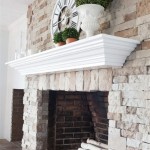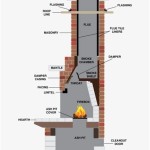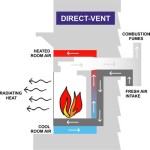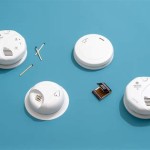Corner Gas Fireplace Mantels: A Comprehensive Guide
Corner gas fireplaces offer a space-saving and aesthetically pleasing alternative to traditional fireplace installations. Their unique positioning allows them to become a focal point without dominating an entire wall. A crucial element in the design and functionality of a corner gas fireplace is the mantel. Corner fireplace mantels not only enhance the visual appeal but also provide a practical surface for displaying decorative items and protecting the area above the fireplace from heat damage. Selecting the right corner gas fireplace mantel requires careful consideration of several factors, including size, material, style, and safety regulations.
This guide provides a comprehensive overview of corner gas fireplace mantels, exploring various aspects to assist in making an informed decision when choosing the perfect addition for a home.
Understanding the Functionality of a Fireplace Mantel
The fireplace mantel serves multiple purposes, both functional and decorative. Historically, mantels were primarily designed to deflect smoke away from the room and protect the surrounding wall from the heat of the fire. While modern gas fireplaces produce significantly less smoke than traditional wood-burning fireplaces, the mantel still plays a crucial role in heat management. A properly installed mantel acts as a thermal barrier, preventing excessive heat from damaging the wall above and around the fireplace.
Beyond its functional purpose, the mantel is a significant decorative element. It provides a platform for displaying artwork, photographs, candles, and other decorative items, contributing to the overall aesthetic of the room. The style of the mantel can greatly influence the ambiance, ranging from rustic and traditional to modern and minimalist. The mantel also serves as a framing element, drawing the eye to the fireplace and emphasizing its importance as a focal point.
In the context of a corner gas fireplace, the mantel's functionality extends to addressing the unique spatial considerations presented by its location. The angled placement necessitates a mantel designed specifically to fit the corner, maximizing both its decorative potential and its ability to protect the surrounding walls.
Key Considerations When Choosing a Corner Gas Fireplace Mantel
Selecting the right corner gas fireplace mantel involves careful evaluation of several factors. Failure to properly consider these aspects can lead to unsatisfactory aesthetic results or, more seriously, safety hazards.
Size and Dimensions: The size of the mantel should be proportional to the fireplace and the overall dimensions of the room. A mantel that is too large can overwhelm the space, while one that is too small may appear insignificant. Accurate measurements of the fireplace opening and the surrounding wall space are essential. Consider the height of the ceiling and the depth of the corner when determining the appropriate mantel size. Some mantels are designed to extend beyond the firebox itself, creating a more substantial presence in the room. The projection of the mantel, or how far it extends from the wall, also needs to be considered to ensure it does not obstruct movement within the room.
Material Options: The material of the mantel influences both its aesthetic appearance and its fire resistance. Common materials include wood, stone, metal, and composite materials. Each material offers unique characteristics and benefits. Wood mantels provide warmth and a traditional look, but they must be properly treated to resist heat damage. Hardwoods like oak, maple, and cherry are often preferred for their durability and aesthetic appeal. Stone mantels, such as marble or granite, offer a more luxurious and fire-resistant option. Metal mantels, often constructed from cast iron or steel, provide a sleek and modern look. Composite materials, such as concrete or engineered wood, offer a balance of affordability and durability. The choice of material should be based on both personal preference and the specific requirements of the gas fireplace.
Style and Design: The style of the mantel should complement the overall décor of the room. Corner gas fireplace mantels are available in a wide range of styles, from traditional and ornate to contemporary and minimalist. Traditional mantels often feature intricate carvings, decorative moldings, and classic lines. Contemporary mantels tend to be simpler and more streamlined, with clean lines and minimal ornamentation. Consider the existing architectural details of the room and choose a mantel that harmonizes with the overall design. The finish of the mantel is also an important consideration. Darker finishes can create a more dramatic and formal look, while lighter finishes can brighten up the space and create a more casual and inviting atmosphere.
Clearance Requirements: Maintaining adequate clearance between the fireplace opening and the mantel is crucial for safety. Gas fireplace manufacturers typically specify minimum clearance requirements in their installation manuals. These requirements are designed to prevent the mantel from overheating and potentially catching fire. The minimum clearance distance varies depending on the specific fireplace model and the material of the mantel. Generally, a taller fireplace opening requires a greater clearance distance. It is essential to consult the manufacturer's instructions and adhere to all safety regulations. If unsure about the clearance requirements, consult a qualified fireplace installer or contractor.
Installation Considerations: Proper installation is essential for both the safety and the aesthetic appeal of the mantel. Corner fireplace mantels require precise alignment and secure mounting to the wall. Depending on the material and size of the mantel, professional installation may be recommended. Wood mantels can typically be installed using screws and wall anchors, while heavier stone or metal mantels may require additional support structures. The wall behind the fireplace must be structurally sound to support the weight of the mantel. It is crucial to follow the manufacturer's instructions carefully during installation. Ensure that all screws and fasteners are properly tightened and that the mantel is level and securely attached to the wall. If uncertain about the installation process, seek the assistance of a qualified professional.
Exploring Mantel Material Options in Detail
The choice of mantel material significantly impacts the overall look, feel, and safety of the corner gas fireplace. A more detailed examination of common mantel materials is vital for making an informed decision.
Wood Mantels: Wood is a popular choice for fireplace mantels due to its natural beauty, warmth, and versatility. Wood mantels can be stained or painted to match any décor, and they can be easily customized with carvings, moldings, or other decorative details. However, wood is also combustible and can be susceptible to heat damage. Therefore, it is crucial to choose a wood species that is relatively heat-resistant and to apply a fire-retardant coating. Hardwoods such as oak, maple, and cherry are generally preferred over softwoods like pine or cedar because they are denser and less likely to warp or crack under heat. Ensure that the wood is properly seasoned and kiln-dried to minimize the risk of shrinkage or expansion. Consider using a non-combustible shield behind the mantel to further protect it from heat.
Stone Mantels: Stone mantels offer a more luxurious and fire-resistant option. Natural stone, such as marble, granite, or limestone, is inherently non-combustible and can withstand high temperatures without damage. Stone mantels are available in a variety of colors and textures, and they can be custom-fabricated to fit any fireplace opening. However, stone mantels are also heavier and more expensive than wood mantels. Installation requires specialized tools and expertise. Veneer stone mantels offer a more affordable alternative to solid stone. Veneer stone is a thin layer of natural stone that is adhered to a lightweight backing material. Veneer stone mantels offer the look and feel of natural stone at a lower cost and are easier to install.
Metal Mantels: Metal mantels provide a sleek and modern look. Cast iron and steel are common choices for metal mantels. Metal mantels are non-combustible and can withstand high temperatures without damage. They are also relatively easy to clean and maintain. Metal mantels are available in a variety of finishes, including brushed nickel, polished chrome, and powder-coated colors. Metal mantels can be custom-fabricated to fit any fireplace opening, and they can be designed with intricate patterns or minimalist designs. However, metal mantels can become hot to the touch during fireplace operation. Consider using a heat-resistant finish or adding a protective barrier to prevent burns.
Composite Mantels: Composite mantels offer a balance of affordability and durability. These mantels are typically made from engineered wood products, such as MDF or plywood, that are covered with a veneer or laminate. Composite mantels are less expensive than solid wood or stone mantels, and they are easier to install. They are also available in a wide range of styles and finishes. However, composite mantels are not as fire-resistant as stone or metal mantels. It is crucial to choose a composite mantel that is specifically designed for fireplace applications and that meets all safety standards. Consider using a non-combustible shield behind the mantel to further protect it from heat.
Ensuring Safety and Compliance with Building Codes
Safety is paramount when installing a corner gas fireplace mantel. Adherence to building codes and manufacturer's recommendations is crucial to prevent fire hazards and ensure the safe operation of the fireplace.
Local building codes typically specify minimum clearance requirements for combustible materials near fireplaces. These requirements vary depending on the jurisdiction and the type of fireplace. Always consult with local building officials or a qualified contractor to determine the specific requirements for the area. The manufacturer's installation manual provides detailed instructions on safe installation practices, including clearance requirements, venting specifications, and gas line connections. Follow these instructions carefully to avoid potential hazards.
Regular inspection and maintenance of the fireplace and mantel are essential for safe operation. Check the gas line connections for leaks, and ensure that the venting system is clear of obstructions. Clean the mantel regularly to remove dust and debris. Inspect the mantel for any signs of damage, such as cracks, warping, or discoloration. If any damage is detected, have the mantel repaired or replaced immediately. Install smoke detectors and carbon monoxide detectors in the vicinity of the fireplace to provide early warning of potential hazards.
When selecting a contractor to install the fireplace or mantel, verify that they are licensed and insured. A qualified contractor will have the necessary expertise and experience to ensure that the installation is performed safely and in compliance with all applicable codes. Request references and check online reviews to assess the contractor's reputation. Obtain a written contract that clearly outlines the scope of work, the materials to be used, and the cost of the project. Ensure that the contract includes a warranty for the workmanship and materials. Working with a reputable contractor can provide peace of mind and ensure a safe and satisfactory installation.
By carefully considering these factors and adhering to all safety regulations, one can select and install a corner gas fireplace mantel that is both aesthetically pleasing and functionally safe, enhancing the beauty and comfort of any home.

The Corner Gas Fireplace A Great Way To Maximize Your Space

Corner Fireplace Ideas New Best 25 Gas Apartment Stone

Elegant Corner Gas Fireplace Mantels

Wood Mantel And Surround For Corner Gas Fireplace

Empire White Mountain Hearth Corner Cabinet Mantels With Base Fits Vfd Fireplaces Usa

Discover The 61 Best Corner Fireplace Designs In 2024 Living Room Gas

24 Vail Standard Corner Cabinet Mantel Built In Base Empire

Buck Stove Model 1127 Corner Mantel Gas Fireplace Fireplaces Usa

The Corner Gas Fireplace A Great Way To Maximize Your Space

Discover The 61 Best Corner Fireplace Designs In 2024 Living Room Decor Gas Comfy
Related Posts








